
The highly talented Viennese engineer Curt Herzstark was deported to the Buchenwald concentration camp near Weimar in 1943. There, at the behest of the Nazis, he produced design drawings for what later became the world’s smallest mechanical calculating machine, the Curta. This cylindrical calculator is still considered a technical marvel today. But Herzstark was cheated out of his life’s work.
Eighty years ago, on January 20, 1942, the infamous Wannsee Conference took place in Berlin. The subject was the mass extermination of European Jews. One of the victims was Curt Herzstark (see Fig. 1). The Viennese engineer, creator of the world’s smallest mechanical calculating machine, was an ingenious inventor.
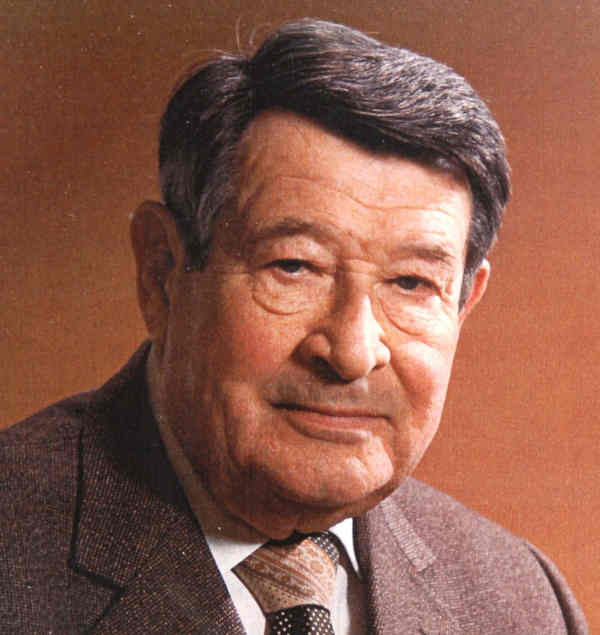
Credit: Liechtensteinisches Landesmuseum, Vaduz, image: Sven Beham.
Herzstark’s ordeal was very long
Herzstark, a half-Jew, received two Austrian patents in 1938 and 1939. His goal was to build a light, portable calculating machine. In 1938, Hitler invaded Austria. Five years later, Herzstark was arrested and taken to Buchenwald concentration camp (see Fig. 2).
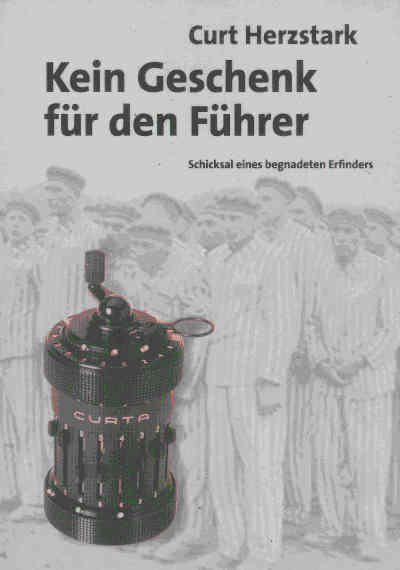
The work was edited by Christine Holub.
Source: Books on demand GmbH, Norderstedt
In Buchenwald, he was forced to make designs for his calculating machine. Initially it was called Liliput (see Fig. 3).
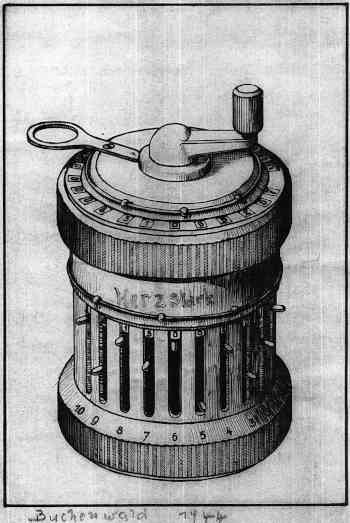
Later, the machine was given the name “Curta.”
Source: Christine Holub/Schreibmaschinenmuseum Pfäffikon ZH).
Escape from Thuringia
After liberation from the concentration camp, Herzstark had three trial pieces manufactured at his own expense in 1945 at the Rheinmetall-Borsig company in Sömmerda, where he became a technical director. However, since Thuringia was assigned to the Soviet occupation zone and Herzstark was being spied on, he fled headlong to Vienna to escape the Russian henchmen. Minutes of a meeting in 1945 document his escape (see Fig. 4).
Fig. 4: Escape from Sömmerda. Minutes of the works council meeting of December 4, 1945.
The members learn of Herzstark’s disappearance.
Source: City of Sömmerda, Historisch-technisches Museum im Dreyse-Haus.
But the engineer saw no future in Vienna, where his parents owned the Austria, Herzstark & Co. calculating machine factory. He was not allowed to take over the company as originally agreed. He therefore tried to win over calculating machine manufacturers in Switzerland for the production of the Curta, including the Zurich Egli company, known for the Millionaire and the Madas (see Fig. 5).
Fig. 5: Herzstark’s letter to Egli. The Austrian inventor is looking for a producer.
He describes the difficult conditions in and after the war.
Source: Schreibmaschinenmuseum Pfäffikon ZH
Mass production in Liechtenstein
In 1946, Contina Büro- und Rechenmaschinenfabrik AG Vaduz (later Mauren) was founded. Herzstark was technical director. In 1948, mass production of the Curta began in Mauren and in Eschen in Liechtenstein. In 1949, the Curta 1 was presented at the Basel Sample Fair and at the Frankfurt Fair, and a year later in Hanover. By 1971, some 140,000 units had been manufactured. But in the Principality he was cheated out of his life’s work by brown board members and thrown out of his company as early as 1951.
The smart, highly complex machine (see Fig. 6) was manufactured in two models (Curta 1 and 2). Even today, the machines, which master all four basic arithmetic operations, function flawlessly. It was not until 2015 that engineering drawings and patent documents for multiple Curtas came to light in Herzstark’s estate. He also received an Austrian patent for these in 1954/57. The University of Birmingham had built a twelve-fold Curta for matrix calculations in 1953, but it has disappeared. The multiple Curta is the world’s smallest mechanical parallel calculator.
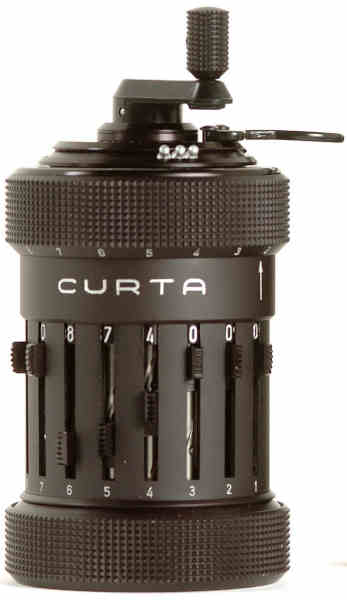
primarily in the number of digits in the setting mechanism, revolution counter and accumulator.
Credit: Liechtensteinisches Landesmuseum, Vaduz, image: Sven Beham
The Curta is considered to be the culmination of over 300 years of development of mechanical calculating machines, which began in the 17th century with Wilhelm Schickard, Blaise Pascal, and Gottfried Wilhelm Leibniz.
References
Bruderer, Herbert: Meilensteine der Rechentechnik, De Gruyter Oldenbourg, Berlin/Boston, 3rd edition 2020, volume 1, 970 pages, 577 illustrations, 114 tables, https://www.degruyter.com/view/title/567028?rskey=xoRERF&result=7
Bruderer, Herbert: Meilensteine der Rechentechnik, De Gruyter Oldenbourg, Berlin/Boston, 3rd edition 2020, volume 2, 1055 pages, 138 illustrations, 37 tables, https://www.degruyter.com/view/title/567221?rskey=A8Y4Gb&result=4
Bruderer, Herbert: Milestones in Analog and Digital Computing, Springer Nature Switzerland AG, Cham, 3rd edition 2020, 2 volumes, 2113 pages, 715 illustrations, 151 tables, https://www.springer.com/de/book/9783030409739
Herzstark, Curt: Kein Geschenk für den Führer. Schicksal eines begnadeten Erfinders, Books on demand GmbH, Norderstedt 2005, 292 pages (eds.: Christine Holub, Ute Schröder, Bernd Schröder, Heinz Joss) (memoirs)
Herzstark, Curt: The inventor of the Curta calculator, Oughtred Society, Roseville, California 2017, 180 pages (memoirs)
Maier, Elmar: Ein prägender Lebensabschnitt. Rechenmaschine Curta (Patent Herzstark), 2014, 22 pages (first-hand account), http://dx.doi.org/10.3929/ethz-a-010345785
Nipp, Hansjörg: Curta, Carena & Co. Geschichte der Contina in Mauren, Alpenland-Verlag AG, Schaan FL 2017, 183 pages
Herbert Bruderer is a retired lecturer in didactics of computer science at ETH Zurich. More recently, he has been an historian of technology. bruderer@retired.ethz.ch, herbert.bruderer@bluewin.
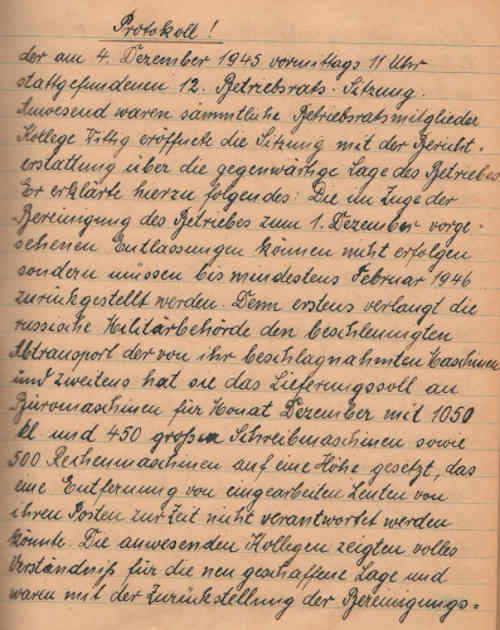
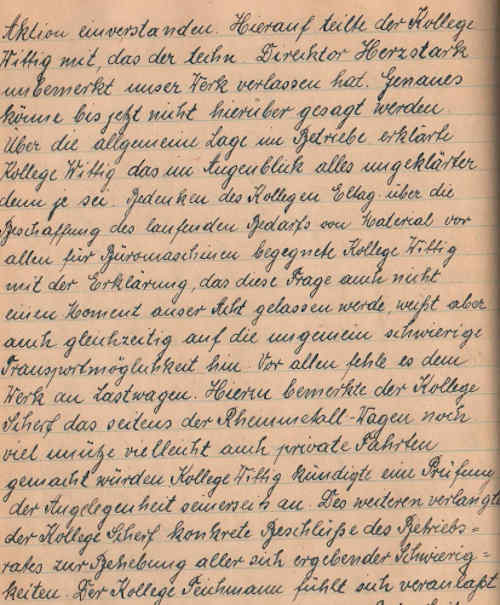
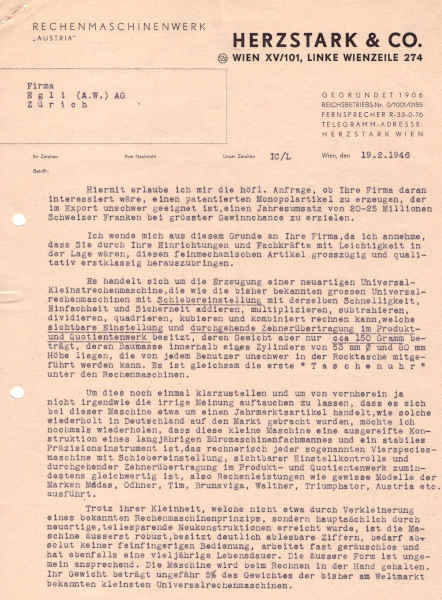
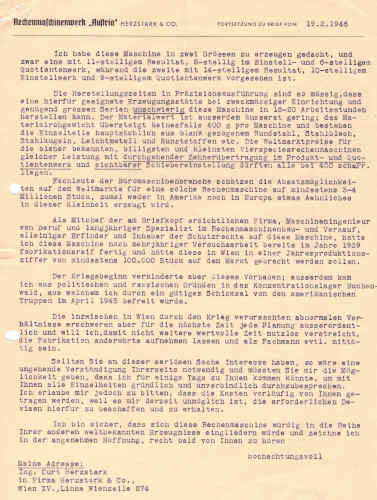



Join the Discussion (0)
Become a Member or Sign In to Post a Comment